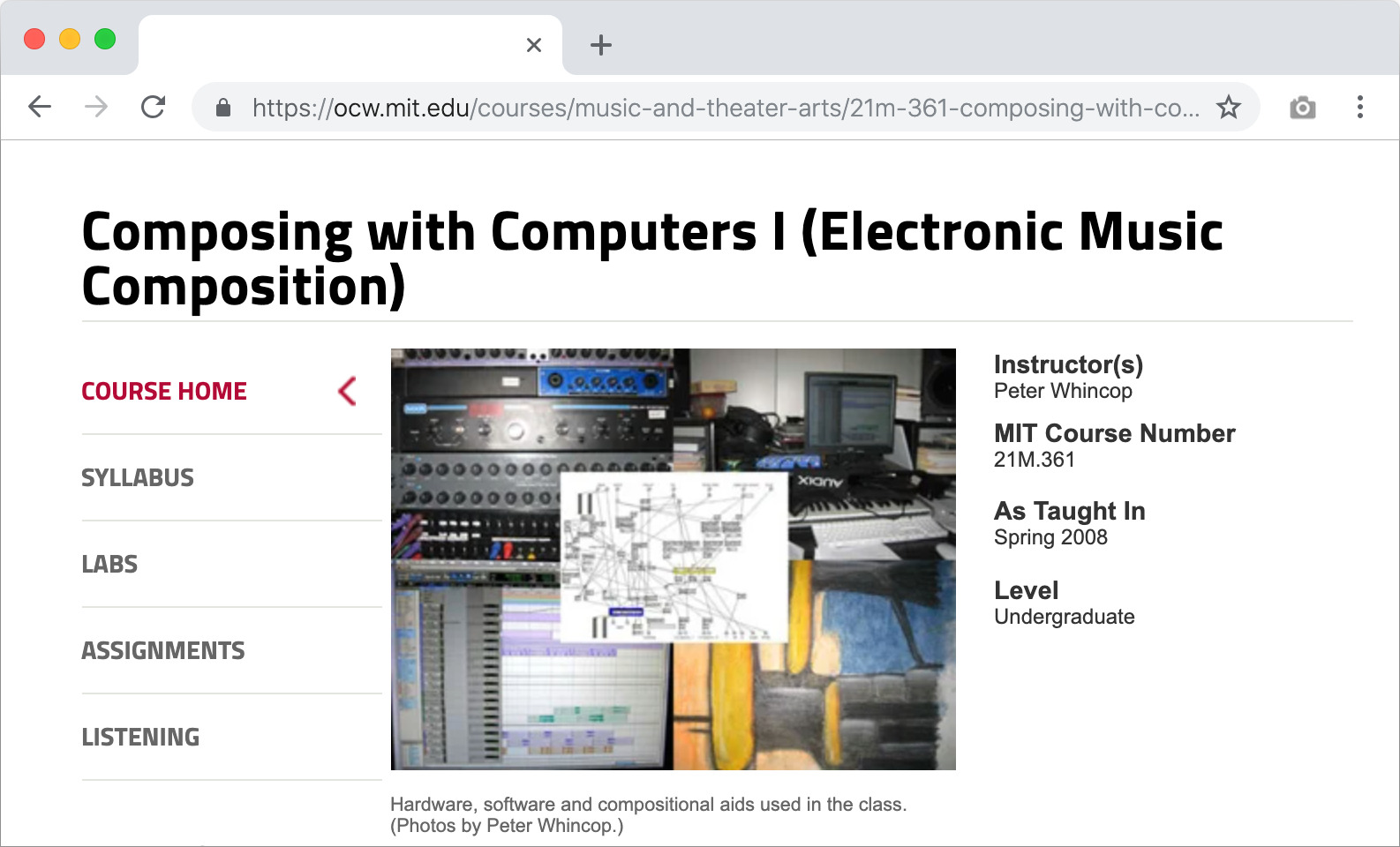30 May 2021
21M.361
One of my favorite experiences at MIT was being able to take the always oversubscribed class “21M.361: Composing with Computers”. It was originally taught by Evan Ziporyn (post-minimalistic composer, founder of Bang on a Can All Stars, and the clarinet in Steve Reich’s Music for 18 Musicians), but was being run and expanded upon by Peter Whincop (assistant professor who was finishing a dissertation at Harvard).
The class really challenged how I thought about sound and composition, pushing things outside of what most people consider music—entering spaces that could seem dull and droning, but simultaneously subtle and delightful. The assignments were a combination of listening to hours of sonic compositions and a 4-hour audio lab where you’d be able to work on your own composing and creating things, and then in class there’d be discussion and additional listening.
Peter brought a deeply knowledgeable, playful, and highly opinionated energy to the class. When I looked up info on him just now, I came across two reddit posts mentioning him:
…how Peter Whincop teaches 361 has a lot to do with how great the class is.
i think something about peter brings out the weirdness in everyone in the class. confers a willingness to expose yourself, try new things, and discover how that affects people in ways you couldn't predict.
I remember Peter talking about how insulting it was for his music to be compared to soundtrack music (oops, my “mediocre soundtrack music” from last week). Also, how when writing about musicians there were only two who you could refer to on a first name basis, Jimi Hendrix and … I forget the other (also, oops, update all reference of “Peter” to “Whincop”).
Here’s an example of an assignment:
Using your drawings as inspiration (and not so much as scores) compose a 5-25 minute noise or drone piece—5 minutes is certainly acceptable, but if you have a high threshold of boredom, you could try for something longer; it might not require much more work. Among others, use the techniques we looked at for Assignment 3.2; try sculpting noise using filters and convolution of parts of noise if you like. You can superimpose normal sounds, like from your long sounds (Assignment 3.1), on whatever you come up with, if you think it sounds good. You can also superimpose instrumental or vocal sounds, but be careful not to make this sound like an unnecessary extra, like a finishing touch that ruins the effect. There will be a subtle twist to this assignment, which I'll mention in lab.
If you’re looking for something to zone out to, click into the assignment and give a listen to the “examples of student work from prior terms” such as the one composed by yours truly or maybe from my dear friend, Catherine McCurry.
